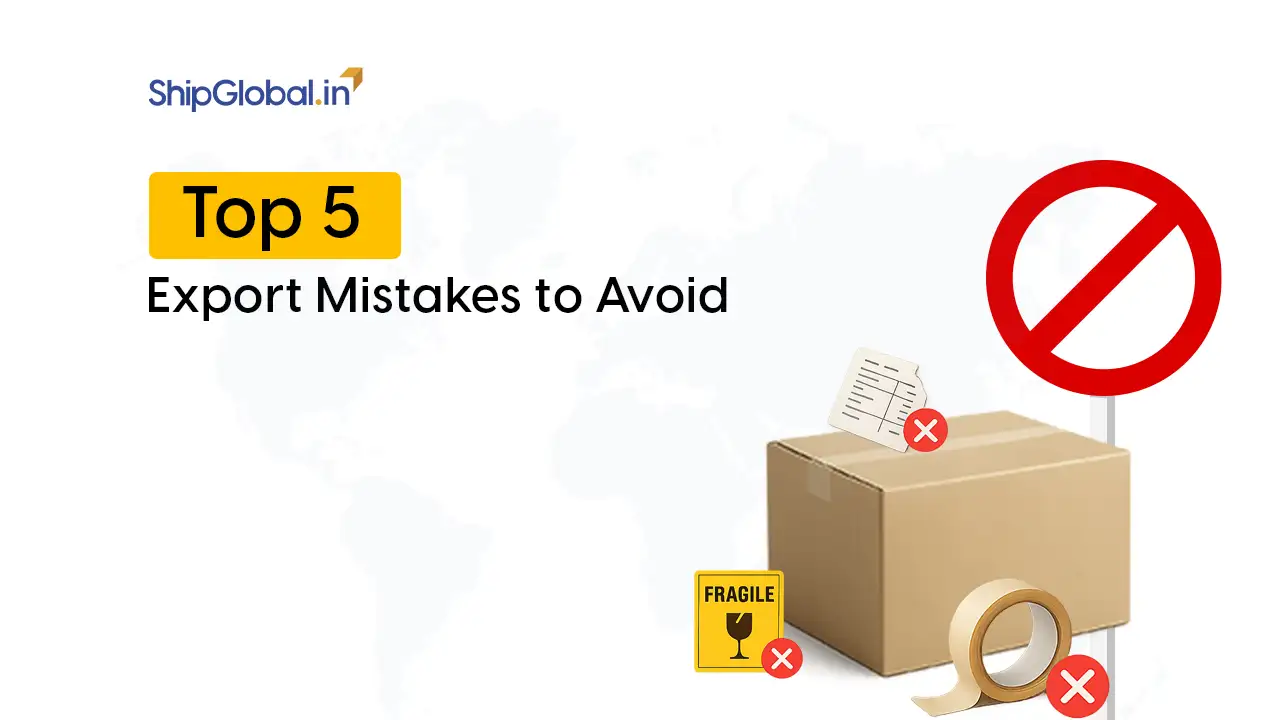In today’s interconnected world, businesses and consumers rely heavily on cross-border logistics to facilitate the movement of goods across international boundaries. The rise of eCommerce and global trade has made cross border shipping crucial for companies looking to expand their reach and cater to a wider audience. As international commerce continues to grow, businesses must adapt to the evading logistics landscape to stay competitive.
What is Cross Border Logistics
Cross-border logistics refers to transporting goods across different countries while complying with international trade regulations. This involves multiple stages, including customs clearance, transportation, warehousing, and last-mile delivery. Efficient cross-border shipping ensures that products reach their destination on time, regardless of geographical challenges.
Businesses engaged in global shipping must navigate various regulations, documentation requirements, and tariffs. The success of international logistics depends on the efficiency of these processes, requiring companies to invest in robust supply chain solutions. Additionally, understanding regional trade agreements and leveraging technology driven solutions can help streamline operations.
Role of Cross Border Courier Services
A cross-border courier plays a significant role in ensuring the seamless delivery of parcels across different regions. These courier services specialize in handling international shipments, offering businesses reliable solutions for global shipping. They take care of customs documentation, duties, and taxes, reducing the hassle for businesses and consumers.
Several well-known cross-border courier services operate globally, providing express shipping options and supply chain management solutions. These providers have established networks that help expedite shipments while ensuring compliance with international regulations. Choosing the right courier service can significantly impact delivery times and customer satisfaction.
Challenges in Cross Border ECommerce Shipping
While cross-border logistics presents numerous opportunities, it also comes with challenges, such as:
- Customs Regulations: Different countries have varying import export policies, which can cause delays if not properly managed. Businesses must stay updated with each country’s trade regulations to avoid unnecessary complications.
- Shipping Costs: International shipping fees, duties, and taxes can significantly impact the overall cost of logistics. Companies need to factor these expenses into their pricing strategies to remain profitable.
- Delivery Delays: Factors such as political instability, extreme weather, and transportation bottlenecks can lead to delays in global shipping. Implementing contingency plans can help mitigate these risks.
- Tracking and Transparency: Real-time tracking is essential to ensure transparency in the cross-border shipping process. Advanced tracking solutions help businesses and consumers monitor shipments in real time, improving reliability and trust.
Make sure to follow these steps to streamline and strengthen your international logistics process.
Sustainability in Cross Border Logistics
Sustainability has become a critical focus in the logistics industry, as companies seek to reduce their environmental footprint while maintaining efficiency. Green logistics initiatives are transforming the way goods are transported globally.
Several strategies are being implemented to promote eco-friendly cross-border shipping:
- Carbon Footprint Reduction: Companies are adopting electric and hybrid vehicles for last-mile deliveries, as well as using alternative fuels such as biodiesel to lower emissions.
- Eco-Friendly Packaging: The shift towards biodegradable and recyclable packaging materials helps reduce waste, making shipping more sustainable.
- Route Optimization: Advanced AI-driven logistics solutions help optimize delivery routes, reducing fuel consumption and overall carbon emissions,
- Carbon Offset Programs: Many shipping companies are investing in carbon offset initiatives, such as tree planting programs, to counterbalance their environmental impact.
Governments and international organizations are also pushing for stricter environmental regulations to encourage businesses to adopt greener practices. Compliance with these policies is becoming a key factor in cross-border logistics operations.
Cost Considerations in Cross Border Shipping
The cost of global shipping can be a major concern for businesses, particularly small and medium-sized enterprises (SMEs) looking to expand internationally. The main cost factors include:
- Customs Duties and Taxes: Each country imposes different import duties and tariffs, which can significantly increase the final cost of shipping. Companies need to strategically plan their supply chain to minimize these expenses.
- Fuel and Transportation Costs: Rising fuel prices impact shipping costs, making it essential for businesses to explore fuel-efficient transportation options.
- Warehousing and Fulfillment Fees: Storing goods in foreign markets can lead to additional costs, including storage fees and labor expenses. Utilizing regional fulfillment centers can help lower these expenses.
- Technology Investments: Implementing digital tracking and automation solutions can streamline logistics but requires an upfront investment. However, these technologies often lead to cost savings in the long run by reducing errors and improving efficiency.
By understanding these costs and optimizing cross border shipping strategies, businesses can better manage their international shipping expenses while maintaining profitability.
Navigating Cross Border Regulations
Regulatory compliance is one of the most complex aspects of cross-border logistics. Different countries have their own trade policies, tariffs, and documentation requirements that must be followed. Key regulatory considerations include:
- Customs Clearance: The Central Board of Indirect Taxes and Customs (CBIC) oversees import and export processes. Proper documentation, such as a Bill of Entry and Shipping Bill, is required for smooth clearance.
- GST and Duties: India imposes Goods and Services Tax (GST) on imports, along with Basic Customs Duty (BCD), and Integrated GST (IGST). Understanding these tax structures is crucial to avoiding unexpected costs.
- Foreign Trade Policy (FTP): India’s Directorate General of Foreign Trade (DGFT) issues policies governing import and export activities, including licensing requirements and incentives such as the Export Promotion Capital Goods (EPCG) Scheme.
- Restricted and Prohibited Goods: Certain items, such as hazardous materials, antiques, and wildlife products, require special permissions or are banned from cross-border trade.
- E-commerce Cross Border Shipping: The Reserve Bank of India (RBI) and DGFT regulate e-commerce exports under the Liberalized Remittance Scheme (LRS) and Export Data Processing and Monitoring System (EDPMS) to track foreign exchange transactions.
- Trade Agreements: India has multiple trade agreements with countries and trade blocs, such as SAFTA (South Asian Free Trade Area) and ASEAN Free Trade Agreements, which can impact tariff rates and import/export duties
Businesses engaging in global shipping from India should work with logistics experts and legal advisors to ensure compliance with these regulations, avoid delays, and optimize costs.
Best Practices for Efficient Cross Border Logistics
To streamline cross-border logistics, businesses should consider the following strategies:
- Partner with Reliable Cross-Border Couriers: Working with established cross-border courier services ensures smooth and timely deliveries. Trusted partners help navigate complex regulations and provide seamless shipping experiences. Moreover, they offer value added services like real-time tracking to make the entire process seamless for you and your customers.
- Automate eCommerce Processes and Operations: Implementing technology-driven solutions can significantly enhance operational efficiency of businesses. Automating eCommerce processes like order management, order fulfillment, inventory management, and shipment tracking can help reduce time-sensitive and labour-intensive tasks. You can use platforms like Base to integrate multiple eCommerce platforms at a single place and automate your operations in a cost-effective manner. This not only reduces manual errors but also accelerates order processing, making domestic as well as cross-border logistics smoother and more scalable.
- Automate Shipping and Tracking: Implementing technology driven solutions can enhance efficiency and provide real-time tracking updates. Automated shipping platforms help manage inventory, generate shipping labels, and reduce documentation errors.
- Understand Trade Compliance: Keeping up with international trade regulations helps prevent customs issues and unexpected delays. Businesses should invest in compliance training and seek expert consultation to avoid penalties.
- Optimize Packaging: Proper packaging reduces the risk of damage and minimizes shipping costs by reducing weight and volume. Companies should use durable materials that comply with international packaging standards.
- Utilize Regional Fulfillment Centers: Establishing warehouses or fulfillment centers in key regions can reduce shipping time and costs. This approach slows businesses to store products closer to their customers, improving delivery efficiency.
- Leverage Data Analytics: Analyzing shipping trends, customer behavior, and supply chain performance can help businesses make data-driven decisions. Predictive analytics can identify potential disruptions and optimize logistics strategies.
Emerging Trends in Cross Border Logistics
The demand for global shipping is expected to rise with the continuous growth of e-commerce and international trade. Innovations such as AI-driven logistics, blockchain for supply chain transparency, and eco-friendly shipping solutions are revolutionizing the industry.
- AI and Automation: Artificial intelligence is being used to optimize routes, forecast demand, and automate customs documentation. Automated warehousing solutions are also improving order fulfillment efficiency.
- Blockchain Technology: Blockchain enhances transparency in cross-border logistics by providing a tamper-proof record of transactions. This technology reduces fraud, minimizes paperwork, and improves trust between stakeholders.
- Sustainable Shipping: Many logistics companies are adopting green initiatives, such as electric delivery vehicles, carbon offset programs, eco-friendly vehicles, carbon offset programs, and eco-friendly packaging. Sustainability is becoming a key focus for businesses engaged in global shipping.
- Drones and Autonomous Vehicles: The use of drones and self-driving delivery vehicles is being tested to expedite last-mile deliveries. These technologies have the potential to revolutionize cross-border courier services by reducing transit times and operational costs.
Future of Global Shipping
As businesses continue to expand internationally, the need for efficient cross-border logistics will only increase. Companies that embrace digital transformation and innovative logistics solutions will be better positioned to compete in the global marketplace.
Advancements in supply chain technology, improved regulatory cooperation between nations, and customer centric logistics strategies will shape the future of cross-border shipping. Businesses that proactively adapt to these changes will gain a competitive edge, ensuring faster deliveries, lower costs, and higher customer satisfaction.
Conclusion
Efficient cross-border logistics is essential for businesses looking to expand internationally. By leveraging cross-border shipping solutions and partnering with trusted cross-border courier services, companies can overcome logistical challenges and ensure smooth global operations. As technology continues to evolve, the future of global shipping looks promising, offering even more opportunities for businesses worldwide. Organizations that stay ahead of logistics trends and invest in innovative shipping solutions will be well-equipped to thrive in the dynamic global market.
FAQs
Each country imposes different import duties, tariffs, and taxes, which can significantly impact the final cost of shipping. Businesses should plan their supply chain to minimize these expenses.
Customs Regulations: Varying trade policies across countries.
Shipping Costs: Duties, taxes, and transportation expenses.
Delivery Delays: Political instability, weather conditions, and logistics bottlenecks.
Tracking and Transparency: The need for real-time shipment visibility.
Cross-border couriers handle customs documentation, manage international shipping logistics, and ensure timely deliveries while complying with trade regulations.
1. Stay updated with trade policies and import/export laws.
2. Work with logistics experts and legal advisors.
3. Automate customs documentation and compliance processes.
To manage cross-border shipping effectively, partner with a reliable logistics provider, ensure accurate documentation, and use tech tools for tracking and automation. Plan for customs delays and optimize packaging to reduce costs and avoid damage.








